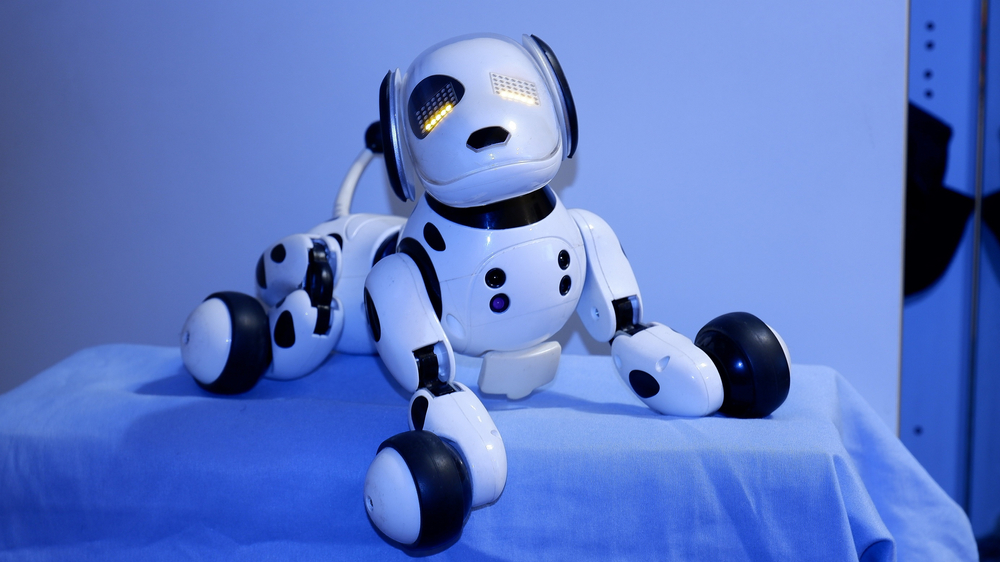Virtual Animals May Also Prowl the Uncanny Valley
Posted on Categories Discover Magazine

You might think that the more a robot or virtual person resembles a real human, the more comfortable we would be with them. But oddly, that’s not entirely true. As robots and virtual people get closer to being lifelike, we do tend to like them more — up to a point. A cute robot with big, round eyes and a happy smile is far more endearing than one that looks like a microwave oven on wheels.
However, somewhere along the road to realism, things start to change. As robots get very close to being lifelike but aren’t quite there, they begin to give humans the creeps. The strange place where this effect occurs is called the uncanny valley, and getting past it is a major challenge for roboticists and developers of digital people.
Read More: The Creepy Feeling in the Uncanny Valley
But Do Virtual Animals Cause This Effect?
Our interactions aren’t limited to virtual people, however. Virtual and robotic animals are common, too — especially in films and video games. In fact, according to one study, not only are animals commonly the protagonists in video games, but animal enemies are more common than zombies (data on vampires was lacking). And, of course, virtual animals are ubiquitous in games, television shows, and movies designed for children.
But Nemo isn’t creepy, Pikachu doesn’t give you the willies, and Big Bird is nowhere near the precipice of the uncanny valley. Still, roboticists and animators need to know: When virtual and robotic animals edge ever closer to being lifelike, can they, like their humanoid counterparts, induce the uncanny valley effect? Some research suggests they can.
Creepy Cats and Preternatural Pandas
In 2018, research by a team of German scientists tested the hypothesis that virtual animals could also slip into the uncanny valley. The team chose to work with images of cats because cats are common pets. They chose cats rather than dogs because dogs come in so many breeds, with wildly differing looks and aspects (think dachshund versus Doberman or Labrador versus pit bull), that the choice of dog breed could influence the results.
Read More: Do Animals Like Dogs Experience Social Commitment Like Humans?
After two studies that collected feedback on how virtual cats affect human viewers, the researchers did indeed find that virtual cats can cause an unsettling feeling in viewers if the cats look real enough but not too real. (The study did not address the fact that real cats can cause an unsettling feeling if they choose to do so, but I suppose that was outside the scope of the research.)
More recently, scientists in the Netherlands and South Africa have been doing similar research. They, too, have found evidence that virtual animals can induce the uncanny valley effect. These researchers developed an animal-likeness scale analogous to the human-likeness scale developed by Masahiro Mori, the Japanese robotics pioneer who developed the uncanny valley hypothesis.
(Credit: Rativa, A. S., & Postma, M. ) Expert-based ranking and participant-based ranking (1 is least animal-like and 6 is most animal-like)
Then, they created multiple variations of a virtual panda (an animal that’s rather hard to imagine giving one an eerie feeling). The variations included a mechanical panda, a stuffed toy panda, a robot panda, a zombie panda (OK, so maybe a zombie panda could be a little unsettling), a photorealistic panda, and a real panda. But even using the generally adorable panda for their study, they found that the close-but-not-quite-panda-like pandas could elicit the uncanny valley effect.
There were other interesting observations in these studies. For example, the panda group found that how the animal moved influenced the effect. The German researchers pointed out that the effect likely differs from one kind of animal to another. (What it takes for a cat to send you into a world of weirdness might be quite different from what it takes for a panda to do so.) Still, the advice to creators of video games, movies, and so on is simple enough: Keep it phony or get it right. Anything in the middle runs the risk of sending your creation into the uncanny valley, a place dreaded by roboticists everywhere.